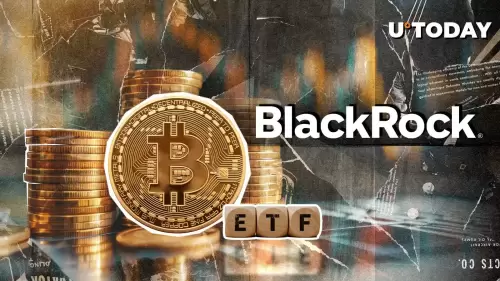 |
|
 |
|
 |
|
 |
|
 |
|
 |
|
 |
|
 |
|
 |
|
 |
|
 |
|
 |
|
 |
|
 |
|
 |
|
Cryptocurrency News Articles
Crypto adoption is accelerating under the Trump administration.
Jun 11, 2025 at 10:04 pm
The United States has emerged as a central force in shaping the crypto market, both from the standpoint of regulation and macroeconomics.
The Trump administration has seen a swift acceleration in crypto adoption fueled by the administration’s policies and actions.
The US has emerged as a central force in shaping the crypto market, both from the standpoint of regulation and macroeconomics. This is also evident in how the crypto market has begun moving along with US stock markets, reflecting growing institutional participation and sensitivity to macroeconomic conditions. In its latest report, HTX Ventures takes a look at the implementation of President Donald Trump’s crypto policies and the impact of current US dollar liquidity on the crypto markets.
How regulation is reshaping crypto market cycles
"Legalization and dollarization are the defining core tailwinds of this cycle. Bitcoin is the primary beneficiary, acting as a gateway for US institutional capital via ETFs, which further solidifies the long-term legitimacy of the US crypto industry. The US crypto adoption process is expected to generate a continuous stream of positive news and regulatory developments.
The evolution of US crypto policy will likely span the entirety of the second Trump term. Proposals to finance large-scale Bitcoin purchases, similar to the accumulation of gold during the Great Depression, will require fiscal maneuvering. These measures may even include engineering negative GDP prints to justify monetary stimulus, as has occurred in past cycles, including 2008, 2020, and other periods of economic stress. The US has yet to allocate an official budget for sovereign Bitcoin purchases.
Unlike past cycles propelled by catalysts such as the ICO boom in 2017 or the DeFi Summer of 2020, the current cycle is driven by a regulatory shift, including the SEC’s supportive stance on crypto and the proposed Strategic Bitcoin Reserve.
The crypto market is increasingly aligned with global macro trends, mirroring tech equities in their longer, more stable cycles. In the current cycle, Bitcoin exhibits a stronger correlation with traditional financial markets, alongside abnormally low volatility.
Institutional investors have now become the primary drivers of Bitcoin’s price movements. This can be demonstrated by open interest in CME Bitcoin futures, which rose from under $4 billion before the approval of ETFs to a consistent level above $10 billion, with peaks above $20 billion.
However, CME’s open interest may be inflated by institutional investors, who use leverage to profit from the spread between spot ETFs and futures when the basis exceeds the US Treasury yield. If these basis arbitrage positions are unwound at scale, they could trigger sharp price declines through spot ETF outflows.”
Trump’s crypto policy execution
Recent policies implemented under the Trump administration have accelerated the institutionalization of cryptocurrencies. The repeal of SAB 121 enabled traditional financial institutions to offer custodial services for crypto assets. As such, Citibank is actively exploring the opportunity of adding crypto custody, while JPMorgan Chase plans to offer crypto investments to its clients through a third-party custodian.
The FIT21 bill and executive actions around stablecoins have also laid the groundwork for long-term regulatory clarity. FIT21, though not yet enacted, sets the direction for digital asset classification. It splits them between the SEC and the CFTC, depending on the level of decentralization: Highly decentralized tokens fall under the CFTC, and more centralized assets remain under the SEC’s oversight.
The future outlook points to even more favorable regulatory developments for the crypto industry. While the US Strategic Bitcoin Reserve has been recently established, active purchases of Bitcoin have not yet begun, which suggests that a key growth catalyst may still be ahead.
In parallel, stablecoin legislation is expected to advance rapidly. The proposed GENIUS Act aims to create a comprehensive regulatory framework for dollar-backed stablecoins, providing a legitimate entry point for banks, payment processors and corporations. The Trump administration had already supported the initiative to enable commercial banks to custody or issue stablecoins during its first term.
Disclaimer:info@kdj.com
The information provided is not trading advice. kdj.com does not assume any responsibility for any investments made based on the information provided in this article. Cryptocurrencies are highly volatile and it is highly recommended that you invest with caution after thorough research!
If you believe that the content used on this website infringes your copyright, please contact us immediately (info@kdj.com) and we will delete it promptly.
-

-

- OUSG Goes Live on XRPL: Ondo Finance launches its tokenized US Treasury product OUSG on XRP Ledger, offering $30M TVL and instant liquidity.
- Jun 14, 2025 at 05:20 am
- Bridging TradFi and DeFi: OUSG's expansion to XRPL boosts institutional access to tokenized treasuries, with support from top asset managers.
-

-

-

-

-

-

-





























































